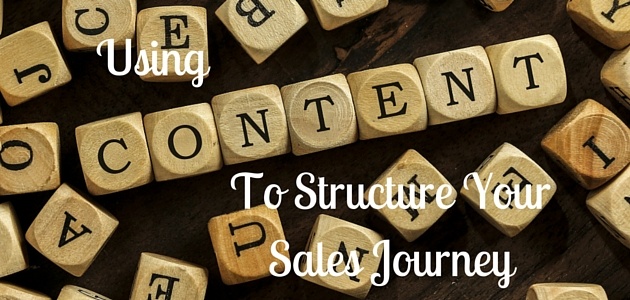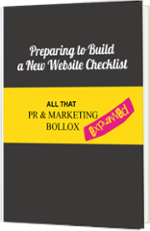

This is blog three of a six blog sub-series on the topic of websites, part of the ‘All that PR & Marketing Bollox” weekly blog series.
In blog 1 of this website series, we discussed the ways in which a prospect can arrive on your website for the first time. Once they do that, it’s worth considering what they are interested in, which will be largely based on what point they are at in the sales cycle.You might be lucky enough to have someone on your website for the first time who has just discovered you and is ready to buy. He or she wants to talk to a salesperson NOW! This will be the point at which that wonderful ‘contact us’ button comes into its own, as this person is ready to engage with a salesperson.
While this does happen, sadly, it’s not that frequent. In most cases the answer, quite simply, is that they are looking for information now and they will potentially buy later.
Many of my clients wonder why they are getting people on the website who are then not converting immediately into sales. In most of these cases, it’s because the business owner has not appreciated that when the customer first arrives, they are not looking to be sold to. They are looking to get a sense that the company understands their problems.
Informative optimised content
The most straightforward way to give that impression is through an informational blog post, or “entry level content.” The purpose of this content is to be found by Google via search engine optimisation and a well optimised headline, which draws the customer in at a stage where they’re not ready to be sold to.
To achieve this, your blog needs to discuss the issue at the highest level, in a non-salesy tone. It needs to contain appropriate keywords that Google will favour. It needs to be relevant, helpful, easy to digest and, most importantly, provide value to the customer. As soon as you start to say “I’m great, give me your business,” you lose the reader quickly and potentially forever. Don’t talk about your products or services, talk about the problems which your products or services solve. Lastly, at the end of this blog, you need to provide a call to action to the reader, which gives them an action to take if they want to learn more and segues to the next step of the sales journey.
Top of the Funnel Content
After reading your blog, the customer may leave your page. That’s not a loss, as you’ve made an impression, provided them with value, and entered their mind as a potential option down the road, when they are ready. If, however, they do decide to click on your call to action, then they progress one step further down the sales funnel.
At that point, it’s your job to offer them more value and inform them more about what you do, but don’t jump to selling to them yet. Instead, provide them with content in an incrementally self-promoting way. For example, if a call to action at the end of your blog post entices the reader by saying: “There are 5 key ways to increase your company’s revenue generation. We’ve talked about the first way in this blog. Click here to download an article that discusses the other four,” you then have the opportunity to ask for the prospect’s email address in exchange for a download of what you are offering. This “top of the funnel” (TOFU) content may be something like an ebook or perhaps, a white paper. It’s more meaty and valuable than a blog post but still manageable in terms of length. Generally though, because fewer and fewer people have time to digest a full length whitepaper, eBooks have become the internet-era replacement. They contain all of the salient points of a whitepaper in a graphical and more conversational way, but provide enough informational value to allow you to ask for some information, such as an email address and perhaps a job title, in return for it.
Middle of the Funnel Content & Beyond
Next, you may offer what’s known as “middle of the funnel” (MOFU) content. Since the idea is to offer increasingly self-promoting and sales-oriented content as we move through the sales process, at this middle of the funnel stage you might offer an educational Webinar or a case study on how you have solved business problems for other organisations. This shows that you know and understand the prospective customer’s problem and that you’ve solved similar problems for other people (i.e. your existing customers). The prospect still might not be ready to talk to anyone on the phone, but you are making the case to them that you have successfully solved their problem before and you are elucidating just how you’ve done that.
Once the customer has digested your MOFU content, then the “contact us” button starts to become appropriate. However, keep in mind it may not be until after you’ve offered your “bottom of the funnel” (BOFU) content, which is usually something like a price list or a free trial offer. This is offered to those who you are pretty certain are highly interested prospective customers in need of what you’re selling.
This journey down the rungs of the sales funnel is a simple, structural process which provides a logical and natural journey for your prospect to travel.. Well executed, it is a simple and highly effective means of cultivating your prospects and delivering qualified prospects to your sales team.
Tip 9: Use content to structure your prospect’s journey through your website. Doing so will increase your chances of getting them to stick around and, when they are ready, to talk to your sales team.
If you'd like to read more about how to structure your website for your prospects, simply click here to download this handy website checklist.





Submit a Comment